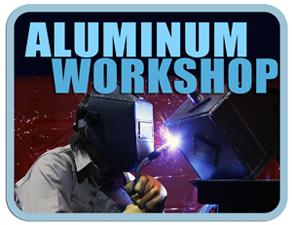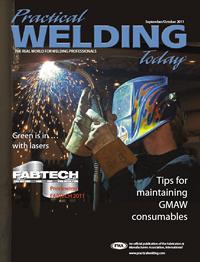President
- FMA
- The Fabricator
- FABTECH
- Canadian Metalworking
Categories
- Additive Manufacturing
- Aluminum Welding
- Arc Welding
- Assembly and Joining
- Automation and Robotics
- Bending and Forming
- Consumables
- Cutting and Weld Prep
- Electric Vehicles
- En Español
- Finishing
- Hydroforming
- Laser Cutting
- Laser Welding
- Machining
- Manufacturing Software
- Materials Handling
- Metals/Materials
- Oxyfuel Cutting
- Plasma Cutting
- Power Tools
- Punching and Other Holemaking
- Roll Forming
- Safety
- Sawing
- Shearing
- Shop Management
- Testing and Measuring
- Tube and Pipe Fabrication
- Tube and Pipe Production
- Waterjet Cutting
Industry Directory
Webcasts
Podcasts
FAB 40
Advertise
Subscribe
Account Login
Search
Aluminum Workshop: Dissecting a die casting dilemma
- By Frank Armao
- November 24, 2014
- Article
- Aluminum Welding
Q: I weld a lot of aluminum castings. Most of the time they weld fine, but sometimes the weld blows out at me. What’s going on?
A: The problem is caused by the casting process. There are three types of casting processes—sand casting, permanent mold casting, and die casting. The molds for sand casting and permanent mold casting are made from materials that conduct heat relatively poorly. Therefore, the molten casting material cools slowly within the mold, and any gases dissolved in the molten aluminum have a tendency to escape from the casting before it solidifies. Sand and permanent mold castings usually do not exhibit the problem you are seeing because the gas content of the solid casting is low.
In die casting the mold is made from a water-cooled steel block. The molten aluminum is forced quickly into the mold and it, in turn, quickly solidifies. Die casting molds are expensive, so you won’t typically see them used in low-volume applications. In high-volume applications like outboard motor casings, lawn mowers, small power tools, and larger automotive castings, the cost of the molds is distributed over a very large quantity, making the die casting a quick and cheap way to go.
The problem with die castings is that the molten aluminum cools before dissolved gases have a chance to escape, which means they are not distributed evenly. The gas then forms small pockets within the casting. Where they form depends on many factors, the most important has to do with the specifics of the mold design as well as the cooling channels.
Most of the time you will have no difficulty welding on a die casting. However, if you are unlucky enough to try to weld over a gas pocket, the gas will expand because of the heat, causing the weld to blow out at you.
Besides grinding out the bad weld and repair welding, there isn’t much else you can do. Usually by the second or third repair cycle the gas will be gone, making the weld acceptable.
So how do you know if you are welding on a die casting? Look at both of the casting surfaces. If it’s a die casting, one surface will have a half dozen or so small, round marks that are 1/8 in. to 1/4 in. in size. They are readily visible and are caused by the ejector pins that push the casting out of the die.
About the Author

Frank Armao
Aluminum Consulting Inc.
440-479-0239
About the Publication
Related Companies
subscribe now

The Welder, formerly known as Practical Welding Today, is a showcase of the real people who make the products we use and work with every day. This magazine has served the welding community in North America well for more than 20 years.
start your free subscription- Stay connected from anywhere

Easily access valuable industry resources now with full access to the digital edition of The Fabricator.

Easily access valuable industry resources now with full access to the digital edition of The Welder.

Easily access valuable industry resources now with full access to the digital edition of The Tube and Pipe Journal.
- Podcasting
- Podcast:
- The Fabricator Podcast
- Published:
- 04/16/2024
- Running Time:
- 63:29
In this episode of The Fabricator Podcast, Caleb Chamberlain, co-founder and CEO of OSH Cut, discusses his company’s...
- Industry Events
16th Annual Safety Conference
- April 30 - May 1, 2024
- Elgin,
Pipe and Tube Conference
- May 21 - 22, 2024
- Omaha, NE
World-Class Roll Forming Workshop
- June 5 - 6, 2024
- Louisville, KY
Advanced Laser Application Workshop
- June 25 - 27, 2024
- Novi, MI
































